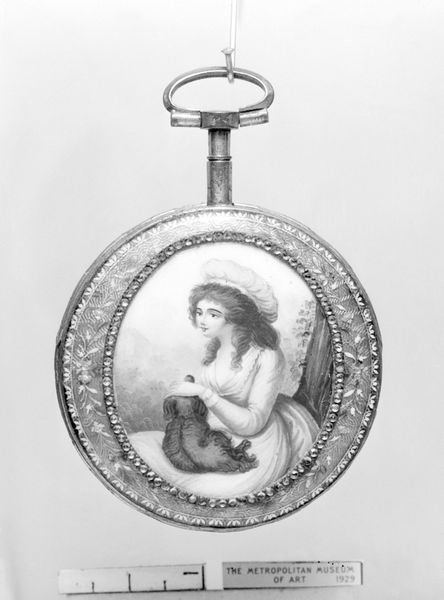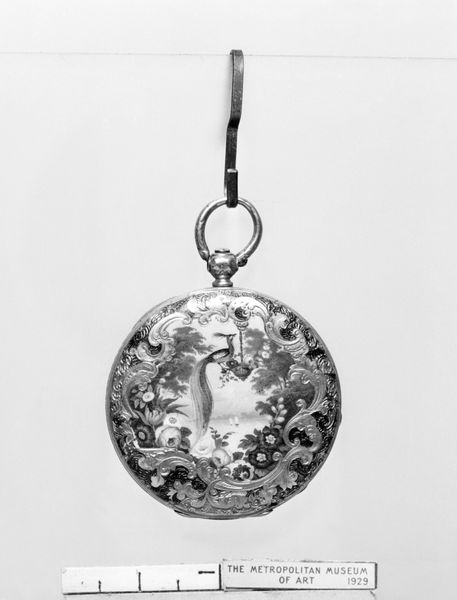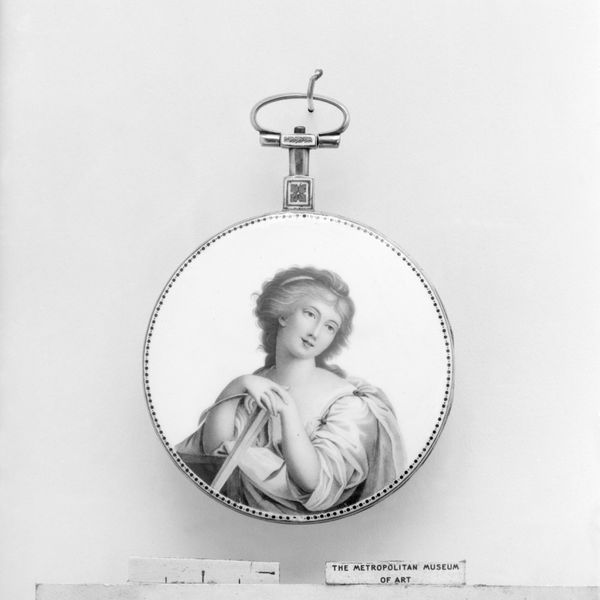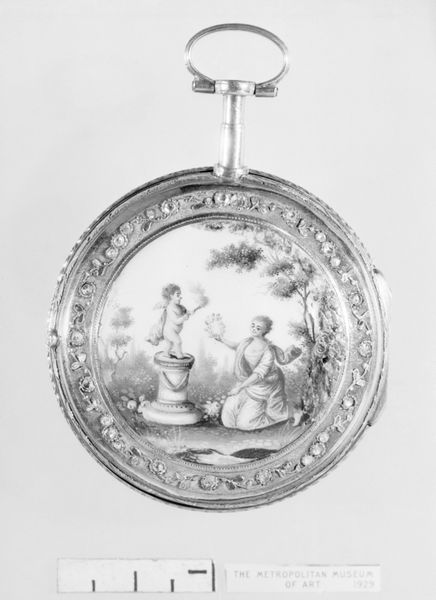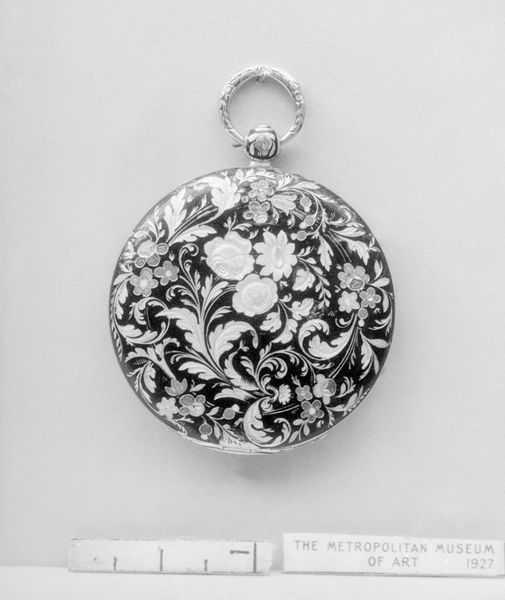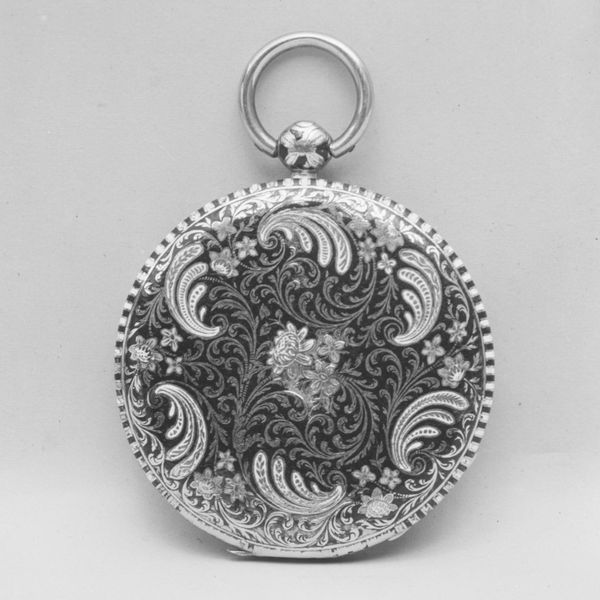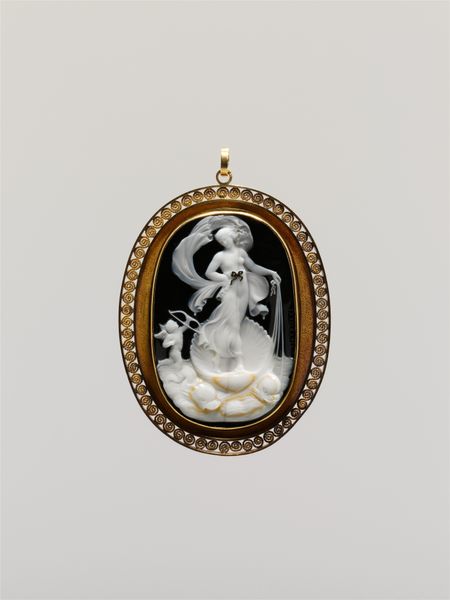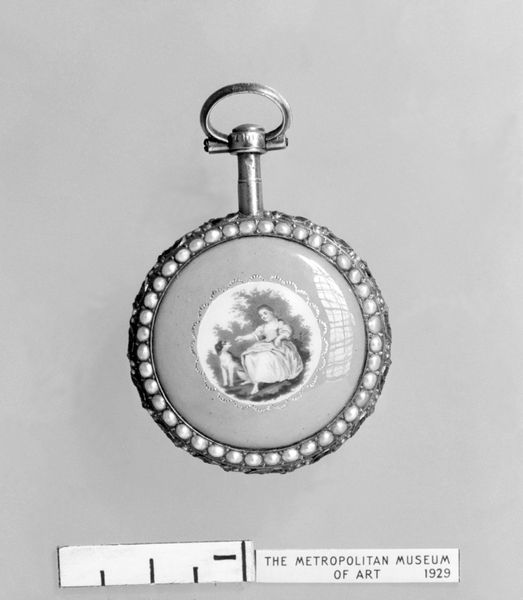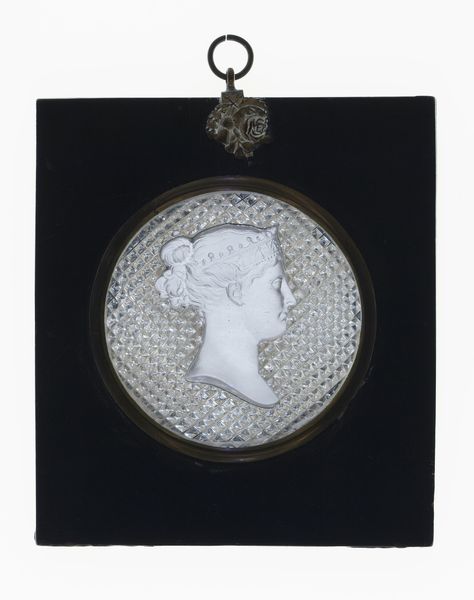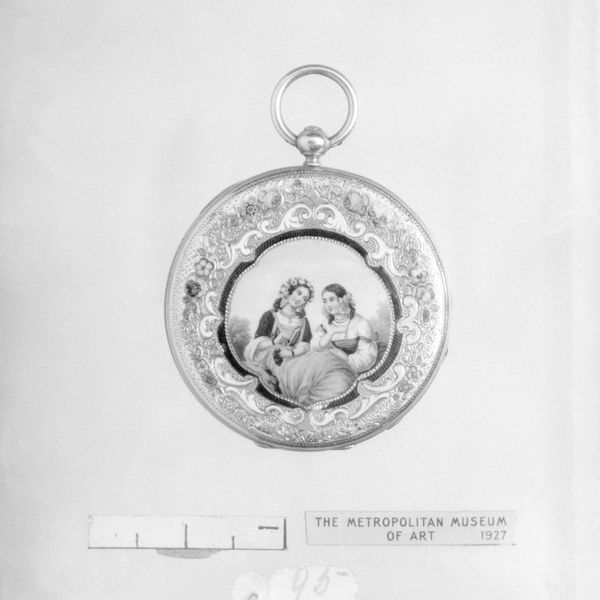
painting, sculpture
#
portrait
#
neoclacissism
#
painting
#
sculpture
#
sculpture
#
black and white
#
men
#
decorative-art
#
miniature
#
statue
Dimensions: Diameter: 1 7/8 in. (4.8 cm)
Copyright: Public Domain
Curator: What strikes me immediately about this object is its intricate miniature scene—the details are incredible, especially considering the scale. Editor: Indeed! We are looking at an enameled watch dating from around 1785 to 1799, currently residing in the Metropolitan Museum of Art. It exemplifies a certain Neoclassical fascination with the classical world, shrunk down to pocket size. The watch is a testament to the decorative arts of the period. Curator: The composition is fascinating. There's a clear division of space, almost a diptych within the circular frame. We see a goddess figure wielding a shield on the left. Then there is what appears to be a shepherd, with a crook on the right. Note the subtle gradation of color in their robes, creating a sense of volume despite the size. It’s almost a stage, framed by the ornate watch casing. Editor: Watches in the late 18th century were more than time-telling devices; they were status symbols. The decoration indicates the social aspirations and aesthetic preferences of its owner, a statement of refined taste. Who are these figures? Minerva and a pastoral swain, perhaps? Curator: Perhaps. Regardless, their positioning—the shepherd seeming to present himself to Minerva, who is averting her eyes—introduces a dynamic narrative. The forms are rendered with surprising precision; you have the subtle highlights and the play of light and shadow that add depth, but all contained in this incredibly compact design. Editor: I’d speculate that these idyllic scenes are an ideal for what the person aspires toward at that moment: to embody a type of enlightenment through the Neoclassical return to Greek aesthetics. Its function speaks of modernity, its design longs for Arcadia. It's all so wonderfully paradoxical. These pocket watches were becoming a trend at the time amongst affluent folks, and you would take the art wherever you went, a mark of distinction. Curator: I see your point about the aspirational aspect; even down to the radiating lines behind the figures, visually pushing forward. But what really grabs me is that interplay of form and narrative—how such a small object contains so much compositional complexity and invites interpretations about the relationship between the figures. Editor: Yes, it does provoke interesting considerations, especially concerning how portable objects acted as visual indicators of a person's outlook during the Enlightenment and the rise of Neoclassicism. The way such small forms influenced identity, is remarkable.
Comments
No comments
Be the first to comment and join the conversation on the ultimate creative platform.
